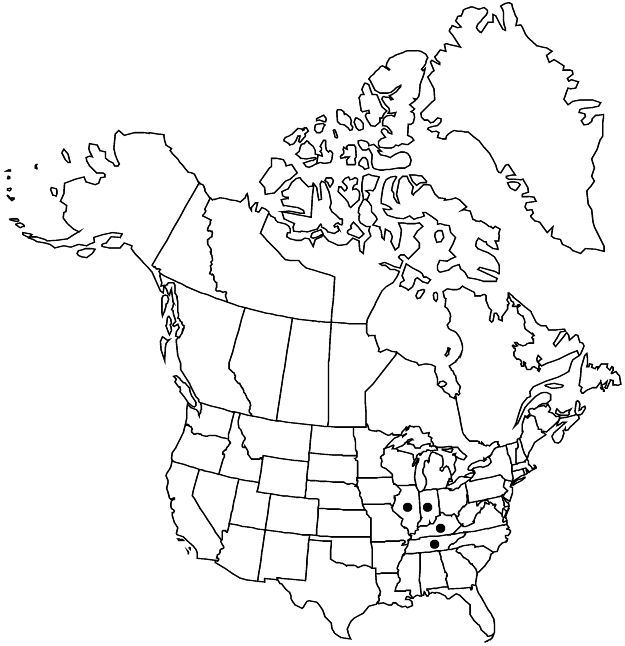Difference between revisions of "Oxalis illinoensis"
Phytologia 50: 467. 1982.
FNA>Volume Importer |
imported>Volume Importer |
||
| (One intermediate revision by the same user not shown) | |||
| Line 52: | Line 52: | ||
|publication year=1982 | |publication year=1982 | ||
|special status=Endemic | |special status=Endemic | ||
| − | |source xml=https:// | + | |source xml=https://bitbucket.org/aafc-mbb/fna-data-curation/src/2e0870ddd59836b60bcf96646a41e87ea5a5943a/coarse_grained_fna_xml/V12/V12_581.xml |
|genus=Oxalis | |genus=Oxalis | ||
|species=Oxalis illinoensis | |species=Oxalis illinoensis | ||
Latest revision as of 19:16, 5 November 2020
Herbs perennial, caulescent, rhizomes present, with horizontal, white, fusiform tubers or tuberlike thickenings, stolons absent, bulbs absent. Aerial stems 1(–3) from base, erect, 15–40 cm, herbaceous, glabrate to sparsely to densely villous, hairs ± straight, spreading, septate and nonseptate. Leaves cauline; stipules rudimentary; petiole 4–7.5 cm, hairs septate and nonseptate; leaflets 3, green, obcordate, (12–)20–30(–35) mm, lobed 1/5 length, lobes apically truncate, margins green, ciliate, surfaces glabrous, oxalate deposits absent. Inflorescences regular or irregular cymes, 1–3(–6)-flowered; peduncles 3–10 cm. Flowers tristylous, mostly at level of leaves; sepal apices without tubercles; petals yellow, with prominent red lines proximally, 12–18 mm. Capsules oblong-ovoid, 7–10 mm, sparsely puberulent to villous. Seeds brown, transverse ridges brown.
Phenology: Flowering Apr–Sep.
Habitat: Slopes, bluffs, ravines, flood plains, mesic forests, sometimes forming dominant ground cover, commonly on limestone, shale, or calcareous loess.
Elevation: 200–500 m.
Distribution

Ill., Ind., Ky., Tenn.
Discussion
Differences between Oxalis illinoensis and O. grandis are subtle, but they appear to be correlated with geography. Oxalis illinoensis occupies the western part of the range of O. grandis in the wide sense. The tuberous portions of the rhizomes of O. illinoensis are diagnostic, but they are commonly broken off during collection. M. E. Medley (1993) observed that the two taxa intergrade, and a hybrid population has been identified in Indiana (A. L. Heikens 2003).
Oxalis illinoensis is listed as threatened in Illinois and rare in Indiana.
Selected References
None.